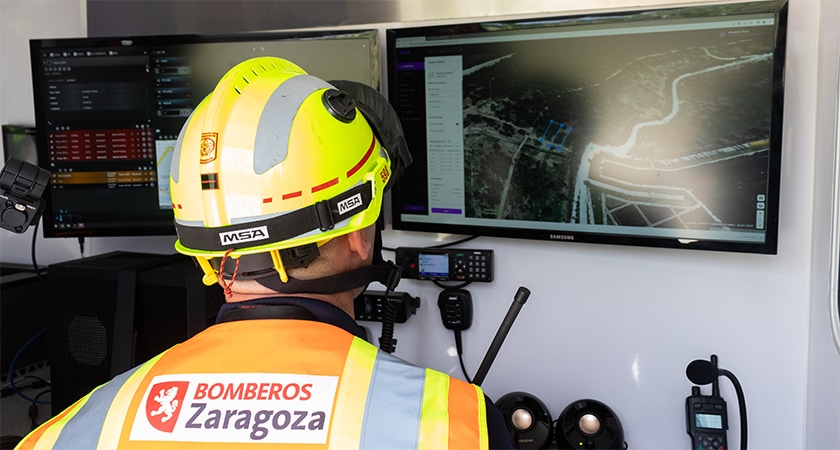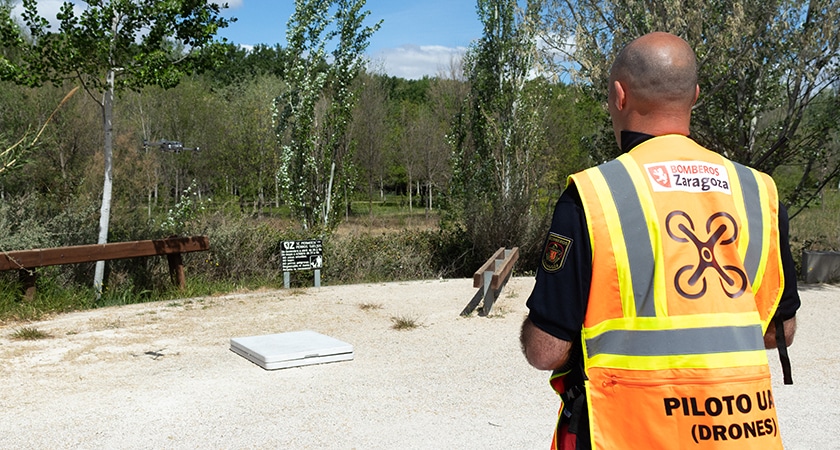
The progressive availability of 4G and 5G private networks for public safety and emergency response environments will enable a host of new applications for different agencies to carry out their work more efficiently. Teltronic has collaborated with the Zaragoza fire brigade in the framework of the European project ‘Flying Forward 2020’, participating in a training exercise to search for people using drones.
For this purpose, the company deployed a private portable 4G system on band 68, recently assigned by many European regulatory bodies for use “by public protection systems and disaster relief operations”, which made it possible for the image of the drones flying over the area to reach the command post in real time.
The command post in turn had a satellite connection through which the images were sent to a centralised Artificial Intelligence platform specialised in the advanced recognition of people and objects.
In this way, both the viewing and analysis of the video captured by the drones could be done in real time without waiting to download and review it later, from the vehicle where the operations were conducted (Tactical command vehicle) and also remotely from anywhere else.
The Zaragoza Fire Department assures that the incorporation of the drones into their work team has made a decisive contribution to resolving a large number of emergencies. Their integration with a private broadband communications system and with AI systems raises this effectiveness to a new level: more and faster information, and a greater image processing capacity. All of this results in a more agile and efficient operation and a more accurate decision-making process.
VIDEO FROM MULTIPLE DEVICES
Video applications are the fastest developing in this new ecosystem of solutions that is emerging thanks to broadband networks. Public security agencies have long been calling for the incorporation of video services in the security and QoS conditions they require, because the advantages they bring are many: firstly, it offers them valuable real-time information for the development of the operation; but it also provides material for subsequent investigations and legal proceedings.

In this sense, and to meet this demand from law enforcement agencies, the industry has developed technology that makes possible the audiovisual recording of police action, for example the well-known personal cameras, and in a later evolution, also allowing video transmission in real time. As a result, handheld terminals and bodycams are now available that allow an officer to share the video image with other officers’ devices and with the control centre.
In addition, the system can also incorporate fixed video systems, and at the same time be integrated with AI systems for facial recognition (e.g. for identification of suspects or missing persons) or number plates.
Video is probably the spearhead of new broadband applications for public safety, but in the future the use of sensors, for example, wearables that monitor the vital signs of officers or the consultation of maps and large databases, will be common for hyper-connected users who will have more information and the best tools to do their job more efficiently.


